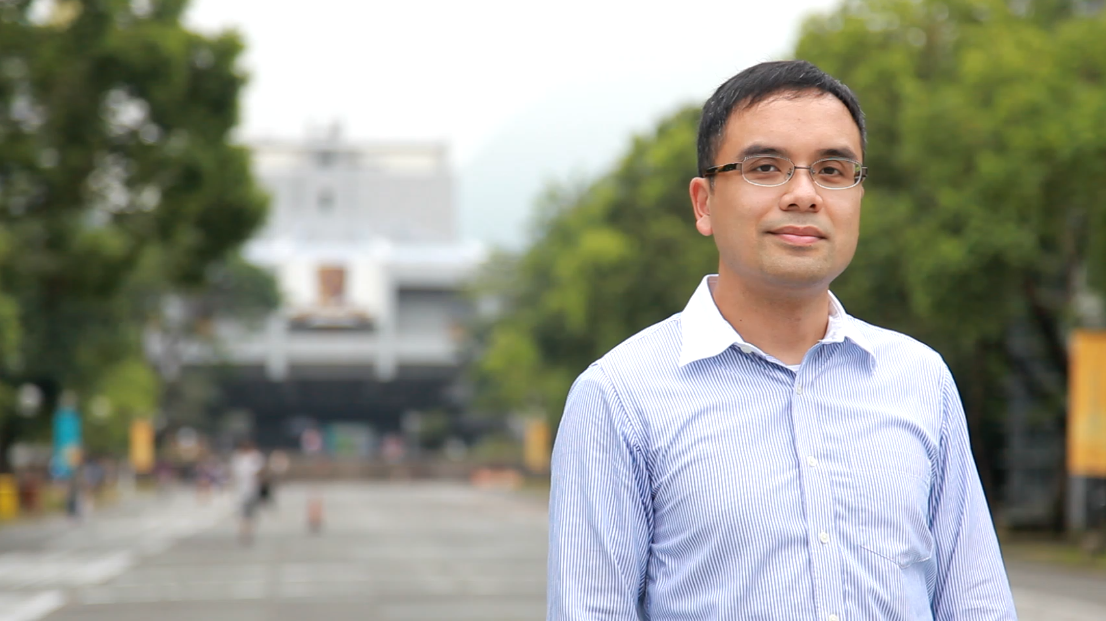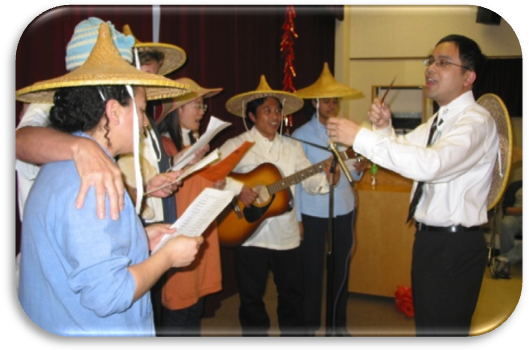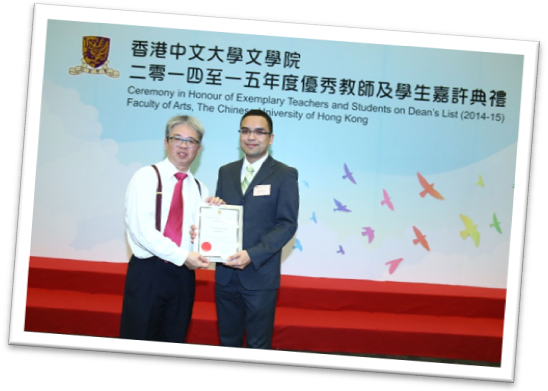PEOPLE |
|
Ms. CHANG Kwun Hung (J. Chang) Division Head of Cantonese Programme Division, University Programme Section
|
 |
Editor’s note: Inspired by matriculation school teachers who were CUHK graduates, Mr. Chang had unfaltering aspiration to get into the Faculty of Arts, after his first visit to CUHK campus at 17 years old. He studied Philosophy and Chinese language and literature as his major and minor respectively. He graduated with first class honours and was awarded a scholarship to pursue further study in the graduate school. Mr. Chang is conversant in Japanese and fond of Japanese culture. It is incredible that Mr. Chang who radiant with genial smile and appeared a little bit shy is a junior coach for Hong Kong Kendo Association (Japanese martial art “Swordsmanship”). He is adored by students and has served the Centre for over 15 years. In this issue of People, Mr. Chang is going to share with us his little stories.
Journey into language teaching
Cantonese mistakes easily made by international students
The common ones made by non-Chinese speaking students or international students are syntax errors. Many elementary students have problem on the application of the verb “俾” (béi, to give). Oftentimes, I heard students saying “俾你錢”, “買你一份禮物”. Sometimes there was abusive use of “俾”, such as “教俾你英文” or “教英文俾你”. Upon intermediate level, students frequently used “把/將” (bá/ jēung) in sentences inappropriately. For example, “將啲嘢做好先至返屋企”. This sentence is not grammatically wrong. However, in daily situation, this expression is not appropriate. The use of “jēung” is seemingly redundant. Instead of “做好啲嘢先至返屋企”, the former one seemed to had stressed on the job that is exceptionally busy and important, so that one has no choice but to finish it. We as teachers should stimulate our students to get in touch with language situations, so that they could understand in what circumstance the word “將” is necessary and another circumstance not. This is of particular importance to students who had previously learned Putonghua or had studied Cantonese and Putonghua at the same time. Apart from helping them to overcome differences in syntax and pronunciation, students need to grasp the skill that the Putonghua word of “把” cannot be simply translated into “將” in Cantonese. In Putonghua, “我把你的兒子帶回家” is better to be expressed as “送你個仔返屋企” in Cantonese (I bring your son home) which is more straight forward, simple and clear, instead of using the word “將”.
Impressive students
Around 10 years ago, when I was teaching in the Cantonese Division of the Continuing Education Section, I took part in the “United Nations Soccer Team” formed by CLC teachers and students of all genders. We practiced every Saturday and entered in a match of “CUHK Premier League”. The whole team had over ten people with additional backup players and a cheering team. That was the glorious years where my sense of belonging to the Centre bred.
Later then, I taught in the University Programme Section. I was exposed to the vivacious and energetic side of mainland Chinese students other than their diligence. They were playful and actively participated in school activities. The size of Cantonese class for Chinese students is relatively big. So, I set a goal for myself to memorize well the name of every student within 3 weeks after semester starts. In early days, there were 20 to 25 students in one class and I found the task strenuous. So, I made a seating plan similar to what I used in my secondary school days. In that case, I could adjust according to their seating in every lecture. I still could remember the year of their graduation. The students invited me to join the Photo Day, took pictures together at the University Mall and gave me a souvenir album. In exchange, I gave them the seating plan I made. They had been graduated for years by now and still in contact with me. Some even paid me a visit on campus. There was another alumnus who learned Kendo during spare time. He even invited me to practice Kendo together on campus.
Your teaching and research plan
Between teaching and research, I enjoyed the teaching process more. Indeed, different strategies are needed for different kinds of programmes and students. Even within the same type of courses and students, I encountered new challenges every school term. That is also where pleasure laid. Started from the fundamentals: to effectively prepare lessons; to revise and write teaching materials and test papers. All these are to respond to the ever changing world and the dissimilar demands of students. So, about my plan for the upcoming one to two years, firstly, to develop new courses, so that those who eager to learn with us but failed to join are given more choices in the study. These include non-credit bearing survival courses which show result in pass/ fail format. Secondly, to provide more channels to exchange students in taking PRINCH organized by the Continuing Education Section – to encourage them using the language outside classroom setting. Moreover, to optimize class arrangement, such as to evaluate the effectiveness of the laboratory session. The next place will be the publication project. We will work closely with the Academic Activities Division to meet the time line of textbook publication. Our teachers strived hard in the past to compile 3 Cantonese textbooks for Putonghua native speakers. From now on, we will follow the master plan of the Centre to write new textbooks for non-Chinese speakers to benefit the community.
|
|
|
| J. Chang guiding non-local Cantonese students in their Spring Party performance | A snapshot during the ceremony in honour of exemplary teachers and students organized by the Faculty of Arts. (Photo source: Faculty of Arts) |
About Us
| Contact Us
| Privacy
|
Disclaimer
Copyright © 2017.
All Rights Reserved. The Chinese University of Hong Kong.


